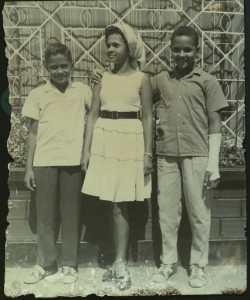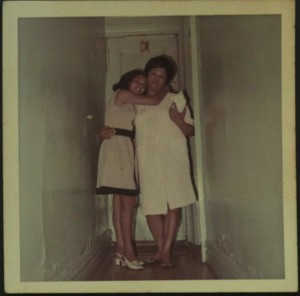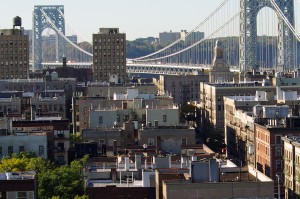Arriving in the US
My mother sent for me in the middle of 1964, when I was 15 years old. It was another very big shift. If you think of a child going through all these moves between the different environments, you would see that these were major traumatic transitions… major traumatic transitions.
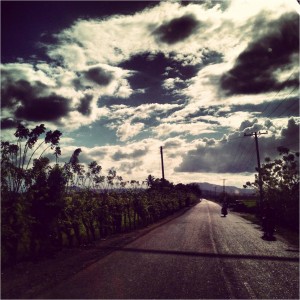 When I was leaving for the United States, I was very upset, because now, after the initial six to eight months of difficulty, and not really liking the environment I was in, I now had to say goodbye to a peer group that I had established. And I had good friends. In fact, during my time in La Romana with the nuns, I really didn’t have good friends—maybe one friend. I developed a lot of friendships in Cotui, primarily through school, and because I was a teenager at that point. It was very, very difficult to leave. In fact, if I had had a choice—because I obviously didn’t have a choice as an adolescent, as a minor, I probably would have stayed, because I had grown accustomed to what the expectations were and what I had to do there. I was fine. I had a lot of fun with my friends; we did a lot of dancing at that age; in fact, Cotui was where I was developed my love of dancing, with my dear friends, so I did not want to leave.
When I was leaving for the United States, I was very upset, because now, after the initial six to eight months of difficulty, and not really liking the environment I was in, I now had to say goodbye to a peer group that I had established. And I had good friends. In fact, during my time in La Romana with the nuns, I really didn’t have good friends—maybe one friend. I developed a lot of friendships in Cotui, primarily through school, and because I was a teenager at that point. It was very, very difficult to leave. In fact, if I had had a choice—because I obviously didn’t have a choice as an adolescent, as a minor, I probably would have stayed, because I had grown accustomed to what the expectations were and what I had to do there. I was fine. I had a lot of fun with my friends; we did a lot of dancing at that age; in fact, Cotui was where I was developed my love of dancing, with my dear friends, so I did not want to leave.
I don’t have strong recollection of the whole migration process, other than at some point, there were friends of my mother who either picked me up at Cotui, or I was sent by bus from Cotui to the capital to Santo Domingo and they met up with me and took me to the consulate to get a visa. Before I left, somebody took me to La Romana one last time to say goodbye to my brothers and then the next day, I had a flight. I brought over to the flight attendant at Pan Am who then took charge of my travel, and I arrived at JFK.
I didn’t really know what it would be like. I arrived in a very lovely environment, at the brownstones on 81st Street in New York City on the West Side. It very pleasant environment, but I didn’t know about the rest of New York City at that time. It was during my growing-up years that I discovered that crime, drugs, and the challenging things for someone growing up in New York City. I really didn’t have a conception of what New York City would be like, other than “oh, it’s the United States; it’s another country.” At that point—having completed the first year of high school in Cotui—I was very engrossed in World History and Dominican history, but really didn’t know much about American history other than when Kennedy was assassinated.
Moving to the United States, my goals were to learn the language, get an education, obtain a profession, and return to the Dominican Republic, which I did. I knew I needed to complete high school and go to college; it was a matter of how soon I would have to do it. It was sooner than I imagined, I had to say. Initially, I had also wanted to go to medical school—I really wanted to fulfill the requirements and go to medical school, but was discouraged very early on from doing so. Given that that didn’t happen, I returned to the Dominican Republic sooner than I anticipated.
Living in the US
Going to a city like New York City, there wasn’t any time to contemplate my purpose for being there. It was survival. It was clear to me that it was survival I have to go for: learn the language, get an education, figure out the city, find ways to be safe in spite of the muggings—it was survival. My mother didn’t teach me any of that; the city did. The city taught me a lot.
New York City offered ample opportunities, but I was a foreigner in a foreign land, and there was much to discover—there was much to experience. My mother had a safe place for us to live and worked in a factory, so even orienting me to the city was something not something she could do; she didn’t have luxury of that. She would say “these are the trains that go to this place—in Spanish—and here are ten cents, and this would give you a train ride where you need to go.”
I lived in three different neighborhoods while in NYC. At first, we lived in the brownstones on 81st Street, right by the Museum of Natural History. My mother had been living there when I arrived, and she had friends who lived nearby. It was a small, convenient, and affordable studio, with easy access to public transportation. At that age, my mother couldn’t take me to school, so I had to quickly learn where to take to subway and I think it was a dime that you pay for a token. I had to learn how to get from 81st Street to 77th Street, which wasn’t much. I lived just four blocks from my middle school and I just walked there every day. I had a great time reading signs: I was very motivated to learn the language. When I went to George Washington High School, I had to take the train.
I think I was the only Dominican child on 81st Street. It was a primarily Jewish neighborhood. The kids in the neighborhood on 81st Street were mostly Jewish, and while I had no identification with them whatsoever, we became friends, and in fact, they helped me learn English. I began to learn English that way because I didn’t have many Spanish-speaking friends.
When we moved to Washington Heights in 1965, we got to see more Dominicans. We lived on a short block that had at least five Dominican families, which seemed a lot to me. We first moved uptown by the Cloisters, and then came down to 163rd Street in Washington Heights. Washington Heights really didn’t have that many Dominicans at that time. It had three or four Dominican families and we all stuck together. It was clear that the community was becoming more and more Dominican for that block—just the block. We weren’t talking about all the other streets; there were certain sections that had pockets of Dominicans. If you drive through there now, it’s like you might as well be in some other part of the Dominican Republic, with all the bodegas and all the restaurants with Dominican names. I developed friendships there and so there was a greater sense of identity living in that community with other Dominican young people. We had the music and dancing and the dancing to the music again. I was also very much involved in the religious community. I joined a church in Washington Heights called “Santa Rosa de Lima,” which, interestingly enough, was the same name as the one where I served as youth leader in Cotui.
Yet it’s very interesting that as I was growing up, I’m not sure I was distinguishing between communities and categorizing and compartmentalizing people in cultures; I was just a part of the environment and a part of the community, so I find ways to navigate it as situations present themselves.
Adjusting to the US
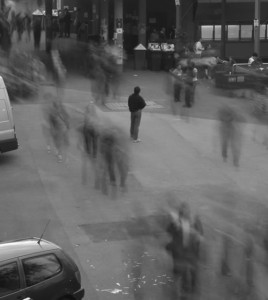 When I look back at my so-called Latino experience as an immigrant, I would say there was definitely a very low sense of self-worth early on that was fed by the environment. The educational system contributed to that—I had become something that was unknown and it didn’t know how to value me. The kids that I was in school with had come from families in Cuba during Batista time. So I was meeting kids who obviously had a lot more education than I had and not from the social backgrounds that I had in the Dominican Republic. I came from very down and out situations in Cotui. I didn’t feel particularly integrated for the first few years. I don’t think I was thinking about being integrating myself into the communities, but I was in a foreign land and felt very much a stranger.
When I look back at my so-called Latino experience as an immigrant, I would say there was definitely a very low sense of self-worth early on that was fed by the environment. The educational system contributed to that—I had become something that was unknown and it didn’t know how to value me. The kids that I was in school with had come from families in Cuba during Batista time. So I was meeting kids who obviously had a lot more education than I had and not from the social backgrounds that I had in the Dominican Republic. I came from very down and out situations in Cotui. I didn’t feel particularly integrated for the first few years. I don’t think I was thinking about being integrating myself into the communities, but I was in a foreign land and felt very much a stranger.
There was a period of time when I distinctly recall rejecting my own culture. I had to go through that crisis, that evolution in my acceptance of my own culture. I was rejecting it because what I could recall of it and the memories it evoked had been lessened compared to New York City; the kids I was meeting from Cuba were certainly of a different social background, and I wanted to be better than I was, and that I believe that it did, in a detrimental way, lead to rejecting my own culture and separating myself from it.
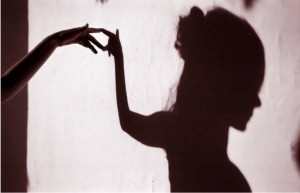 That certainly went on for a long period of time. Then I returned to the Dominican Republic and again to the US and got married in to the type of family that I married. After that, my life really became about living and incorporating the New England way. I’ve integrated more into the New England culture than I’ve expected I would. My style and the traditional style I was being raised in seemed to fit more with a New England style. My life wasn’t about embracing the Dominican Republic. Embracing all that it is now—chaos and all—came for me in the 90s, leading up to 1998, when I started DR Projects. So you’ll find that today, as an adult in my 60s, it’s a tremendous strength. I embrace it very fully. People ask me about my country and my work there and I beam. I’m just delighted about what it is and what it is that is now a part of me. So it is certainly cause for celebration for me—that I embody all of that.
That certainly went on for a long period of time. Then I returned to the Dominican Republic and again to the US and got married in to the type of family that I married. After that, my life really became about living and incorporating the New England way. I’ve integrated more into the New England culture than I’ve expected I would. My style and the traditional style I was being raised in seemed to fit more with a New England style. My life wasn’t about embracing the Dominican Republic. Embracing all that it is now—chaos and all—came for me in the 90s, leading up to 1998, when I started DR Projects. So you’ll find that today, as an adult in my 60s, it’s a tremendous strength. I embrace it very fully. People ask me about my country and my work there and I beam. I’m just delighted about what it is and what it is that is now a part of me. So it is certainly cause for celebration for me—that I embody all of that.

